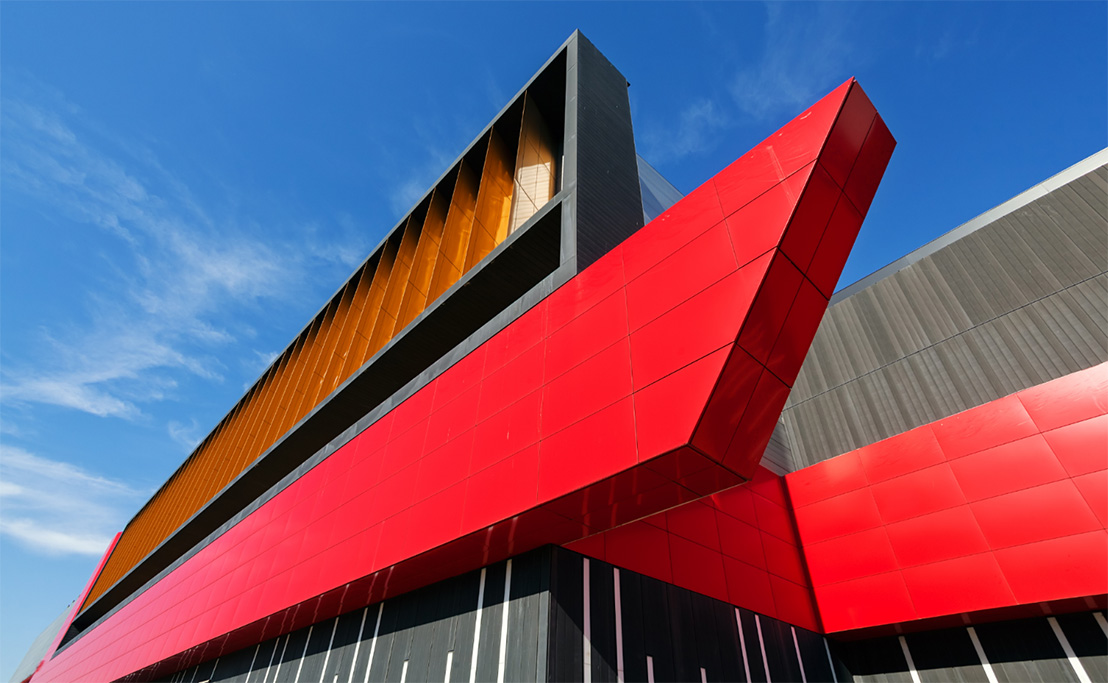
These fabricators represent a minority of metal construction companies. These companies are medium to large in size, and organized by department: administration, sales, purchasing, design, production, etc. The detailing office and production are generally two separate departments, so there's a strong need for good communication and data sharing between them.
The know-how of these companies is rare and much sought-after. Few fabricators have the capacity to take on such large-scale projects. What's more, they represent a risk for fabricators, since a single project of this type represents a very significant proportion of their annual turnover.
Most fabricators of this type have in-house detaling departments to control this crucial aspect of the project, but some may subcontract all or parts of the project.
As far as fabrication is concerned, subcontracting is rarely used, as manufacturers want to keep control of these demanding projects, and therefore prefer to manage them as much as possible in-house.
They fabricate large structures and generally work for general contractors, which increases the pressure from their customers. Late deliveries or non-conformities can lead to penalties that weaken business profitability.
Constraints related to spans, building environment (wind, seismic constraints, heavy traffic, etc.) and project design are calculated by engineering offices, often ending up in complex modeling, with non-standardized and complex connections. The emphasis is on the aesthetic and functional aspects of the project, imagined by architects whose job it is not to consider the implications in terms of building design and fabrication. This type of structure often represents a major challenge for fabricators, not only because of their complex geometries, but also because of the non-standard sizes of the elements that make them up. They sometimes represent a happy medium between structural integrity and aesthetic appeal, while at the same time minimizing the overall weight of the steel.
These projects are systematically associated with highly demanding traceability standards to which manufacturers must adhere. For the latter, this means implementing precise, digitized traceability management processes to gain access to these types of projects.
These types of structures are made up of beams, angles, round and square tubes, flats and plates.
These fabricators produce challenging structures, but with more comfortable margins than traditional steel fabricators, which means they have to manage the fabrication and quality process, while keeping a close eye on production in real time, in order to satisfy demanding customers.
First and foremost, the link with the detaling office must be optimized. Steel construction is characterized by a very small number of standardized parts. It is therefore crucial to retrieve as much information as possible on the elements to be produced from the modeling software, in order to avoid unnecessary double entries, which sometimes lead to human error.
Secondly, manufacturers must optimize the use of steel by methodically organizing their stock and purchasing management: buying enough to make economies of scale when purchasing, and ensuring that they have the stock required for the day's production, while taking care that these fixed assets don't cost them too much money or take up too much space on their production sites.
Parts imported into the production management software can be checked automatically to ensure that there are no unfeasible (in terms of shop-floor capacity) or non-compliant parts to produce.
In addition, the use of raw materials can be optimized with section nesting and plate nesting algorithms to reduce steel costs. On the other hand, although they are necessary, they are not as essential as for traditional fabricators who produce large volumes.
In addition, processing (sawing, drilling, milling, marking, scribing, etc.) needs to be automated on reliable CNC machines, and controlled by production management software to ensure smooth, advanced and error-free programming, as well as automatic progress monitoring. Processing must of course be optimized, but this is not the area where bottlenecks are most likely to occur, as production volumes are lower than on other types of structures.
The construction of voluminous structures also involves the production of welded beams on specialized machines. The production management software must be able to handle this type of part during production preparation: machining of plates on plate machines, then sending the cut plates to welded beam machines for welding of the reconstituted beam.
Tack welding, welding and painting stations are the most essential to optimize. They account for a significant proportion of production volumes. Assemblies and welds are generally complex, requiring a high level of skill and experience on the part of pointers and welders. The use of PCs, tablets and smartphones on the shop floor to visualize assemblies in 3D and manage work orders can be a great help. Furthermore, the ability to mark the location of components to be welded on an assembly using scribing technology, as well as part identification and, where applicable, welding symbols, also makes work more efficient, error-free and accessible to novice welders. Indeed, this information, retrieved directly from the 3D model and then automatically machined on the CNC machines, represents a considerable help in reducing bottlenecks on these workstations. Global labor shortages on these types of workstations further reinforce the above point. Welding robots can also be fitted on the shop floor to support the welders' work.
Shipping is a crucial stage in the manufacturing process, since loading errors or non-optimized loading can be very costly for manufacturers. Indeed, sites can be hundreds of miles away from manufacturing sites, which further amplifies the costs generated by errors compared to more traditional steel fabricators. Exceptional convoys are also often used, and this needs to be taken into account upstream in the manufacturing process, in order to anticipate the needs and constraints of this type of loading.
Finally, production management software must be able to provide visualization of a variety of performance indicators, so that manufacturers can check the profitability of their workshop, employees, projects, etc., over defined periods.